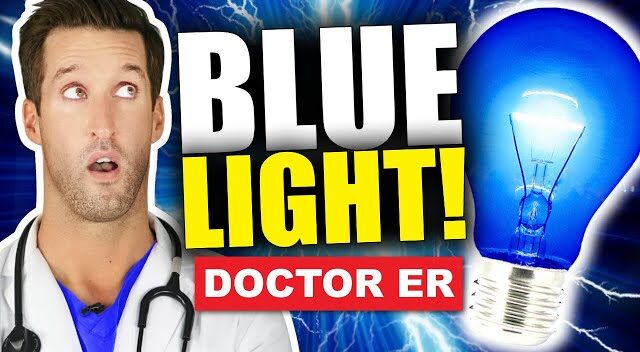In our modern, digitally-driven world, we are constantly surrounded by screens emitting blue light. From smartphones to laptops, this pervasive exposure raises concerns about its impact on our health. Let’s delve into the intricate details as a medical professional explains exactly what blue light does to your body.
I. Introduction
A. Brief Overview of Blue Light
Blue light is a part of the visible light spectrum with shorter wavelengths and higher energy. It is naturally present in sunlight but is also emitted by electronic devices.
B. Pervasive Use of Digital Devices
With the increasing reliance on digital devices, people find themselves exposed to blue light for extended periods, especially during evenings.
II. Understanding Blue Light
A. The Light Spectrum
Understanding the light spectrum is crucial to grasp the potential effects of blue light on our bodies. Blue light falls on the shorter wavelength side of the spectrum.
B. Sources of Blue Light Exposure
Apart from natural sources like the sun, electronic devices such as smartphones, computers, and LED lights contribute significantly to blue light exposure.
III. Impact on Sleep
A. Melatonin Suppression
Blue light exposure, particularly in the evening, suppresses melatonin production, the hormone responsible for sleep regulation.
B. Disruption of Circadian Rhythm
Prolonged exposure to blue light at night can disrupt the circadian rhythm, leading to sleep disorders and insomnia.
IV. Eye Health Concerns
A. Digital Eye Strain
Extended screen time can cause digital eye strain, characterized by symptoms like headaches and dry eyes.
B. Potential Long-Term Effects
Research suggests a potential link between prolonged blue light exposure and long-term eye health issues, prompting concerns among healthcare professionals.
V. Blue Light and Mental Health
A. Connection to Mood Disorders
Studies have explored the relationship between excessive blue light exposure and mood disorders, highlighting the need for further research.
B. Impact on Cognitive Function
Some researchers propose a connection between blue light exposure and cognitive function, raising questions about its impact on mental acuity.
VI. Mitigating Blue Light Effects
A. Blue Light Filters
Installing blue light filters on devices can reduce the amount of blue light emitted, mitigating its potential impact on sleep and eye health.
B. Adjusting Device Settings
Simple adjustments like reducing screen brightness and enabling night mode can also help minimize blue light exposure.
VII. Lifestyle Changes
A. Establishing Screen-Free Time
Creating dedicated screen-free time before bedtime promotes better sleep quality and overall well-being.
B. Promoting Better Sleep Hygiene
Encouraging good sleep hygiene practices, such as maintaining a consistent sleep schedule, can counteract the negative effects of blue light on sleep.
VIII. Blue Light in the Workplace
A. Employer Initiatives
Forward-thinking employers are implementing initiatives to minimize blue light exposure in the workplace, recognizing its potential impact on employee well-being.
B. Employee Awareness and Practices
Educating employees about the effects of blue light and promoting healthy screen habits can contribute to a more health-conscious workplace.
IX. Blue Light and Children
A. Risks for Developing Eyes
Children, with developing eyes, might be more susceptible to the potential risks of prolonged exposure to blue light.
B. Parental Guidelines
Parents are encouraged to establish guidelines for their children’s screen time and educate them about responsible device use.
X. Technological Advancements
A. Innovations in Screen Technology
Ongoing advancements in screen technology aim to address concerns related to blue light exposure, introducing features to minimize its impact.
B. Impact on Blue Light Exposure
As technology evolves, it’s essential to stay informed about the impact of these advancements on overall blue light exposure.
XI. Debunking Myths
A. Common Misconceptions About Blue Light
Dispelling myths surrounding blue light is vital for understanding the real risks and benefits associated with its exposure.
B. Scientific Perspectives
Taking a closer look at scientific perspectives can help demystify the often confusing information surrounding blue light.
XII. Future Research and Developments
A. Ongoing Studies
Scientists continue to conduct research on the effects of blue light, exploring new dimensions and uncovering potential health implications.
B. Potential Breakthroughs
Anticipating future breakthroughs in understanding blue light can pave the way for innovative solutions and preventive measures.
XIII. Conclusion
A. Recap of Key Points
In conclusion, understanding the impact of blue light on our bodies is crucial for adopting responsible technology use.
B. Encouragement for Responsible Technology Use
As we navigate the digital age, incorporating simple practices and staying informed can help mitigate the potential negative effects of blue light on our health.
XIV. FAQs
A. What is the primary source of blue light?
Blue light is naturally present in sunlight, but electronic devices are significant artificial sources.
B. Can blue light exposure lead to permanent eye damage?
While the evidence is inconclusive, prolonged exposure may have long-term effects on eye health.
C. How do blue light filters work?
Blue light filters reduce the amount of blue light emitted by adjusting the color spectrum on screens.
D. Are all screens equally harmful?
The level of harm depends on factors like screen brightness, duration of exposure, and individual susceptibility.
E. Is blue light exposure linked to insomnia?
Yes, blue light exposure, especially in the evening, can disrupt sleep patterns and contribute to insomnia.

